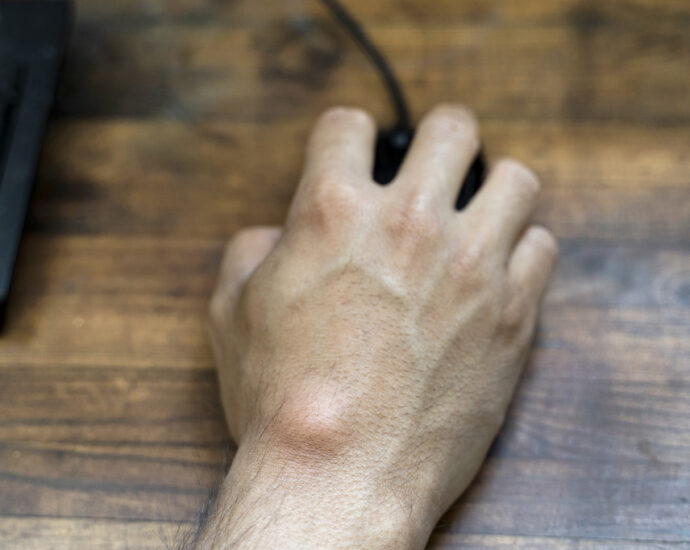Discovering a lump on your body can be alarming. While many lumps are harmless and resolve on their own, others may signal an underlying medical condition that requires attention. Understanding the different types of lumps, their common causes, and red-flag warning signs can help you know when to monitor and when to seek medical evaluation.
This article explores the most common types of lumps, what they mean, and when it’s time to consult a healthcare professional.
Page Contents
What Are Lumps?
A lump is a swelling or growth that develops under the skin or within the body. Lumps can vary in size, shape, and consistency—some feel soft and movable, while others are firm and fixed. They may appear suddenly or gradually over time.
While lumps can form anywhere, they are most commonly noticed in areas such as the breasts, neck, armpits, groin, and skin surface. Not all lumps are cause for concern, but understanding their nature is essential.
Common Causes of Lumps
- Lipomas
- What they are: Soft, fatty lumps that grow slowly under the skin.
- Typical features: Painless, movable, and usually found on the shoulders, back, or arms.
- Risk level: Harmless and benign. Treatment is only needed if they become painful or bothersome.
- Cysts
- What they are: Fluid-filled sacs that can develop under the skin.
- Typical features: Smooth, round, and often tender if infected. Common types include sebaceous cysts and ganglion cysts.
- Risk level: Usually benign. Some may disappear on their own, while others may require drainage or removal.
- Fibroadenomas (Breast Lumps)
- What they are: Benign breast tumors common in young women.
- Typical features: Firm, rubbery, and easily movable.
- Risk level: Not cancerous but should be monitored. Any new breast lump should be evaluated by a doctor.
- Swollen Lymph Nodes
- What they are: Enlarged lymph glands due to infection, inflammation, or—less commonly—cancer.
- Typical features: Small, tender lumps in the neck, armpit, or groin that may appear after a cold, sore throat, or other infection.
- Risk level: Often temporary, but persistent or hard, fixed lymph nodes may require medical evaluation.
- Abscesses
- What they are: Pockets of pus caused by infection.
- Typical features: Painful, red, swollen lumps that may feel warm to the touch.
- Risk level: Require medical treatment, often drainage and antibiotics.
- Hernias
- What they are: Bulges caused by tissue pushing through weak spots in the abdominal wall.
- Typical features: Soft lumps that may appear when standing or straining and disappear when lying down.
- Risk level: Not cancerous but may need surgery if painful or at risk of complications.
- Cancerous Lumps
- What they are: Malignant growths that can appear in the breast, skin, lymph nodes, or other tissues.
- Typical features: Hard, irregularly shaped, and usually painless. They may grow over time.
- Risk level: Require immediate medical evaluation for early detection and treatment.
When to Be Concerned About a Lump
While many lumps are harmless, certain warning signs may suggest a more serious condition. You should see a doctor promptly if a lump:
- Is hard, immovable, or irregularly shaped.
- Grows rapidly or continues to enlarge.
- Persists for more than two to four weeks without improvement.
- Is associated with unexplained weight loss, fever, or night sweats.
- Causes pain, redness, or warmth, which may indicate infection.
- Appears in the breast or testicle, regardless of size.
- Is accompanied by changes in the skin, such as dimpling, ulceration, or color changes.
Diagnosing Lumps
If you discover a concerning lump, a healthcare provider may recommend tests to determine the cause. These may include:
- Physical examination: Assessing size, shape, and texture.
- Ultrasound or mammogram: Imaging to evaluate breast or soft tissue lumps.
- CT or MRI scans: To assess deeper or complex lumps.
- Biopsy: Removing a small sample of tissue for laboratory analysis.
- Blood tests: To check for infection or other systemic conditions.
Treatment Options
Treatment depends on the type and cause of the lump:
- Benign lumps (like lipomas or cysts) may not require treatment unless painful or cosmetically concerning.
- Infected lumps (abscesses) may need antibiotics or drainage.
- Cancerous lumps require a treatment plan that may include surgery, chemotherapy, radiation, or targeted therapy.
- Hernias usually require surgical repair to prevent complications.
Self-Care and Monitoring
Not all lumps require immediate medical attention, but you can take steps at home:
- Monitor regularly: Note any changes in size, color, or pain.
- Avoid squeezing or poking: This may worsen infection or inflammation.
- Maintain general health: A balanced diet, exercise, and good hygiene support immune function.
- Perform regular self-exams: Monthly breast and testicular self-exams can help detect abnormal lumps early.
Conclusion
Finding a lump can be unsettling, but most lumps are benign and harmless. Common causes include lipomas, cysts, swollen lymph nodes, and fibroadenomas, which often require little or no treatment. However, lumps that grow, feel hard or irregular, or are accompanied by other symptoms should be evaluated by a healthcare provider.
The key takeaway is simple: do not ignore a lump. Early evaluation ensures peace of mind and, when necessary, allows for timely treatment. Staying informed and proactive about your health can make all the difference in outcomes.
READ MORE: A Guide to Facial Roller Massage: Enhancing Your Skincare Routine at Home
Sources:
https://www.mountsinai.org/health-library/symptoms/skin-lumps
https://www.nhs.uk/symptoms/lumps/
https://mydoctor.kaiserpermanente.org/ncal/structured-content/skin-lumps-bumps-and-growths-584030
